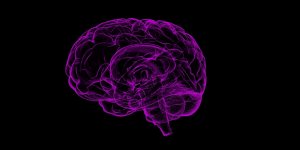
Photo courtesy of Felipe Bustillo on Unsplash
From heroes saving the day to damsels in distress crying for help, the actions that characters take in films are a central component of movie storytelling. A new study by researchers at the Signal Analysis and Interpretation Lab (SAIL) at the USC Viterbi School of Engineering shows that film characters’ actions tend to reflect widespread gender stereotypes, some of which may be harmful.
Using a novel machine-learning framework, the researchers at SAIL’s Center for Computational Media Intelligence have been able to identify characters’ actions from scene descriptions found in movie scripts. The model analyzed over 1.2 million scene descriptions for 912 movie scripts in 31 genres produced over a period of 100+ years (from 1909-2013), identifying fifty thousand actions performed by twenty thousand characters.
Statistical analyses revealed that female characters display less agency than male characters and are more likely to be the object of other characters’ gaze, drawing attention to their appearance. Male characters are less likely than female characters to portray emotion and affection.
The new research, featured in PLOS ONE, builds upon computational media intelligence that USC SAIL has previously conducted to identify bias in media along ethnic, racial and gender lines. A prior study showed that male characters have twice the amount of screen time as female characters and speak twice as often. Researchers Victor Martinez, Krishna Somandepalli and Professor Shrikanth Narayanan hoped to shed light on how characters’ nonverbal behavior may communicate bias.
“Analyzing the participation and the number of women characters on screen is not enough,” said Narayanan, the paper’s senior author and director of the USC SAIL Lab. “Increasing their presence is important, but at the same time it’s also very important to ask: How are they depicted in the story? What actions are they performing in the film? What status are they given and how are they treated by other characters? Because even if you may have many women characters, if you’re making them do stereotyped actions, with less agency or merely as background characters, then the depictions can still be harmful.”
A century of stereotypes
The findings of the study provide quantitative evidence of media trends with respect to gender that have long been noted in social science research:
- Characters’ agency: Male characters are given more agency than female characters. They are less likely to be shown “letting” other male characters do something to them.
- Male gaze theory: Female characters are more likely to be “gawked” or “looked at” by other characters.
- Portrayals of emotion: Male characters are less likely to “sob” or “cry.” They rarely “scream,” “laugh” or “smile” at other male characters.
- Violence: Female characters are more likely to be the targets of aggressive actions such as “kidnap,” “drug” and “hassle.” However, male characters are more likely to be “shot” at with a gun.
- Displays of affection: Two male characters are rarely shown on screen “kissing,” “dancing” or “hugging.”
Though gender roles have been in flux in American society during the century of film studied, the researchers found that some of these stereotypical patterns remained consistent across decades.
“These kinds of messages are being communicated over and over through the movies,” said Victor Martinez, who executed the study as a doctoral student at USC, adding that repeated exposure can unconsciously influence people’s ideas of how men and women should behave.
“Media plays an incredible role in shaping our behaviors and actions,” said Narayanan. “The way a story is told can create either distorted or positive views about gender that influence people’s real-life choices.”
First-of-its-kind framework
The majority of efforts to study gender representations in media are qualitative, relying on labor-intensive human annotations. The study’s computational innovations allowed the researchers to analyze a large sample of film scripts in a short time span.
“While humans may take months to label some of these signals, a trained machine-learning model can do this in matter of days,” said Somandepalli, who also worked on the study as a doctoral student at USC.
Martinez noted that tailoring the model to recognize actions in scene descriptions posed a significant computational challenge. “The models are trained on a particular set of data, and you need to adapt them to the type of language being used in the movie scripts,” he said. “This is the first study to cross that bridge.”
The researchers hope that the machine-learning framework will continue to be refined. To provide other researchers with the opportunity to explore additional questions related to representations of gender, age, and/or race in media, they have made the dataset and labeling models publicly available for download.
The hope is that data generated with these tools can help media gatekeepers make more informed choices about potentially harmful onscreen portrayals.
Said Somandepalli, “Providing empirical evidence will take us beyond anecdotal evidence to influence the appropriate stakeholders to take action.”
Published on December 21st, 2022
Last updated on May 16th, 2024












